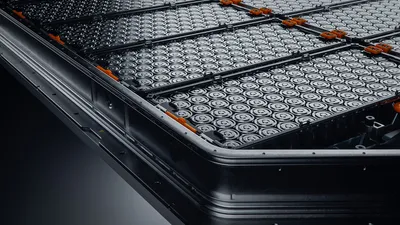Adapting Karl Fischer Methods to Modern Battery Electrolytes
Standard KF reagents react with Li-ion additives, creating false moisture values. This guide explains why those reactions occur and how newer reagent formulations resolve them
Electrolyte chemistry in lithium-ion batteries has grown more complex. Film-formers, stabilizers, and flame-retardants strengthen cycling stability and extend operating life, but they also create new analytical challenges. Karl Fischer titration—the standard technique for water determination in electrolytes—runs into side reactions with these additives that distort the true moisture value.
This guide explains how standard Karl Fischer reagents interact with modern lithium-ion electrolyte additives and how those reactions affect moisture results. It concludes with a comparison table to help labs select reagents suited to current electrolyte chemistry.
The problem with conventional KF on modern electrolytes
Karl Fischer titration detects water by consuming iodine in the presence of sulfur dioxide and a base. The reagent medium must dissolve all three and allow current to pass between electrodes. Alcohol became the solvent of choice because it stabilizes the reaction and delivers sharp endpoints in simple matrices such as salts, esters, and non-reactive solvents. In today’s lithium-ion electrolytes, however, that same alcohol reacts with performance-enhancing additives and alters the course of the titration.
Modern electrolytes include additives that strengthen cell performance but complicate KF titration:
• Vinylene carbonate (VC) forms a protective solid–electrolyte interphase (SEI) on the anode and improves cycling stability. In alcohol-based reagents, it consumes iodine or polymerizes, so the titration drifts without a clear endpoint.
• Fluoroethylene carbonate (FEC) stabilizes interfaces at higher voltages and reduces gas formation. In KF, it follows the same side reactions as VC, producing unstable measurements.
• Lithium bis(oxalato)borate (LiBOB) enhances thermal stability and reduces decomposition at elevated temperatures. With alcohol present, it forms esters that shift the apparent water content away from the true value.
• Lithium difluoro(oxalato)borate (LiDFOB) extends the voltage window and lowers HF formation. In KF, it reacts in the same way as LiBOB, giving neat endpoints that misreport moisture.
Recommended best practices in KF chemistry
Adopting alcohol-free KF chemistry means selecting reagents that fit both the sample matrix and the way the cell is run. Alcohol-free formulations, such as Honeywell’s Hydranal NEXTGEN line, extend the method to lithium-ion electrolytes and other samples where methanol interferes.
The portfolio provides options that cover the full range of Li-ion and other difficult matrices.
• Hydranal NEXTGEN Coulomat A-FA/C-FA – Two-part, alcohol-free, imidazole-free coulometric system (anolyte and catholyte). Designed for diaphragm cells, these reagents minimize side reactions with film-formers, borates, aldehydes, and ketones.
• Hydranal standards (alcohol-free) – Prepared in a propylene carbonate matrix that reflects the chemistry of lithium-ion electrolytes. This design avoids methanol-related interferences during moisture determination.
• Hydranal reagents for oven/gas extraction – Used for challenging samples such as graphite, slurries, or foils. These indirect methods release moisture for analysis without introducing contaminants into the titration cell.
Safety and sustainability as industry drivers
Global demand for lithium-ion batteries continues to accelerate. Manufacturing capacity more than tripled between 2020 and 2023 according to the International Energy Agency, reaching 2.5 terawatt-hours, and announced projects are set to nearly quadruple that figure by 2030. With that scale-up comes heightened scrutiny. Manufacturers face stricter regulations on both product safety and the chemicals used in production.
Alcohol-free KF reagents meet those pressures head-on.
By removing methanol and imidazole—classified as a carcinogenic, mutagenic, and reprotoxic (CMR) substance—NEXTGEN chemistry reduces exposure risks for lab staff and minimizes compliance burdens. The formulations also avoid halogenated hydrocarbons, aligning with broader sustainability goals.
For labs, that means choosing reagents that maintain accuracy while meeting today’s safety and environmental standards. The same KF methods apply, but with a solvent system built for modern compliance and reliability.
Conclusions
Karl Fischer titration remains the standard for water determination in lithium-ion electrolytes. What has changed is the chemistry inside the cell. Alcohol-free, imidazole-free reagents resolve the conflicts created by modern additives, restoring accuracy and stability without new instruments or retraining.




